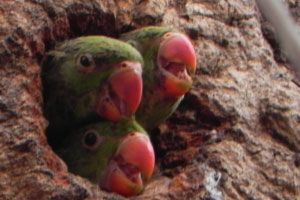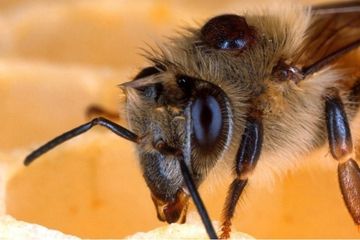
The Invasive Species Council recently put the Victorian government’s risk prevention and risk creator pays policies to the test and found them to be rather meaningless.
The test was over the development of a new policy for the keeping of exotic birds.
The Indian ringneck, native to sub-Saharan Africa and southern Asia, is commonly kept as a pet in Australia. It has been assessed as an ‘extreme threat’ in Australia, with a high risk of establishing in the wild and becoming a serious pest of the environment, agriculture and public amenity. The risks of it establishing in Victoria are increasing as it becomes more common as a pet. In 2013 there were 270 reported escapes in Australia, up from 5 in 1999.
The red-whiskered bulbul and Canada geese are other birds that have a high risk of establishing self-sustaining wild populations. Exotic birds deliberately spread by recreational hunters, Californian quail and partridge, are rated as an ‘extreme’ risk of establishing in the wild.
The Victorian government’s invasive plants and animals policy framework states that its ‘approach will be to prevent the entry of new high risk IPA [invasive plants and animals]’. It states that ‘Preventing high-risk invasive species from establishing is the most cost-effective approach to managing the threat that they pose’.
Initially,environment groups thought that involvement in the development of the new policy would be worthwhile since the policy’s outcomes included: ‘non-indigenous bird species of Extreme or Serious Threat not currently known to be within Australia, are banned from importation, keeping and sale in Victoria’ and ‘new high risk non-indigenous bird species are prevented from establishing in the wild in Victoria’.
However these outcomes were neutered by this additional outcome: ‘private bird keepers may still keep the species they currently hold without increased regulatory burden’. The discussion paper accompanying the consultation in May 2013 also ruled out any action on ‘game’ birds. The paper declared that the Department of Environment and Primary Industries ‘does not consider it reasonable to change the current management of non-indigenous quail, pheasants and partridges.’
The government tied its own hands even before it began to write the policy.
The Invasive Species Council, Victorian National Parks Association and Birdlife Australia dutifully made submissions to the consultation process. We were still hoping our arguments would lead to the regulation of the keeping of high-risk exotic birds to reduce this important invasive species pathway and prevent the establishment of new birds in the wild.
Almost one year later we learnt of the results in an email from the department in April this year. The new policy approved by the Minister for Agriculture and Food Security made absolutely no change to the keeping of high risk pet birds. With classic government formality, the department informed us, ‘The public consultation program was vital in shaping the final policy.’
Months later, in August, the department invited Invasive Species Council to attend a briefing to hear details about the new policy. The briefing was introduced by Associate Professor, Phill Cassey, an invasion ecology expert from University of Adelaide, who went to great length to explain how exotic pet birds posed a high risk of escaping and establishing in the wild.
Strangely, the representatives of bird breeders and bird keepers at the meeting were extremely edgy and appeared highly concerned. Had I misunderstood the policy and were new rules going to be imposed that may limit their bird keeping? Perhaps they thought they were about to hear some bad news?
The department quickly confirmed that I was right to feel our efforts had been futile. In response to a question about whether they will be taking any action to reduce the risk of captive held birds at the source (i.e. to restrict in any way the keeping of pet birds), they replied there will be ‘no regulatory or legislative impost on people’. The bird breeders and collectors were getting heated over perhaps the fear of change, but they can largely operate unchanged.
Bird breeders and traders as risk creators could be a target for reasonable cost recovery to fund government efforts to eradicate emerging populations of escaped birds and to provide disincentives for keeping high-risk birds. When I asked if there was any intention to recover costs from bird breeders or traders, the government replied that there were no legislative means and ‘no intention’.
We must remain positive that we will get better at preventing new invasive species, but the Invasive Species Council is increasingly seeing good biosecurity and invasive species policy emerging across Australia accompanied by little or no change in on-ground practice. Mere rhetoric!




